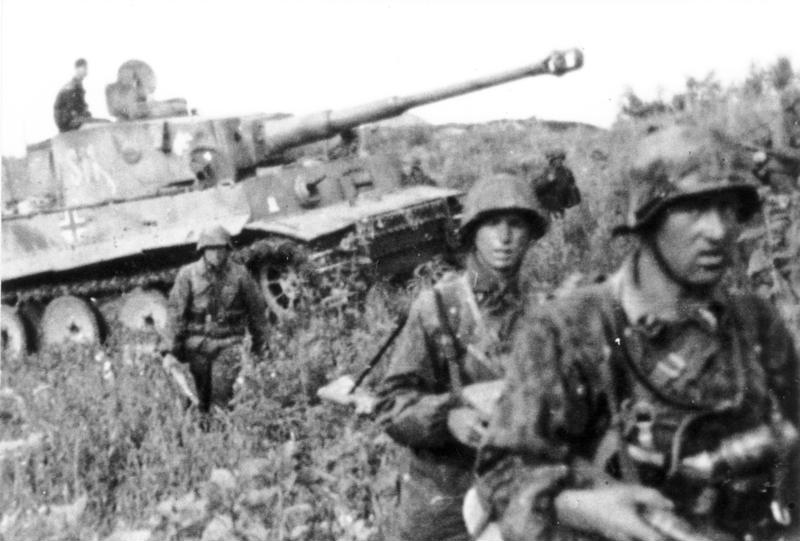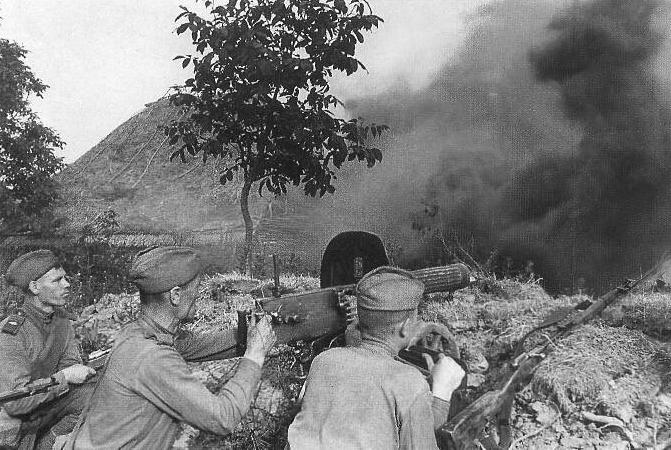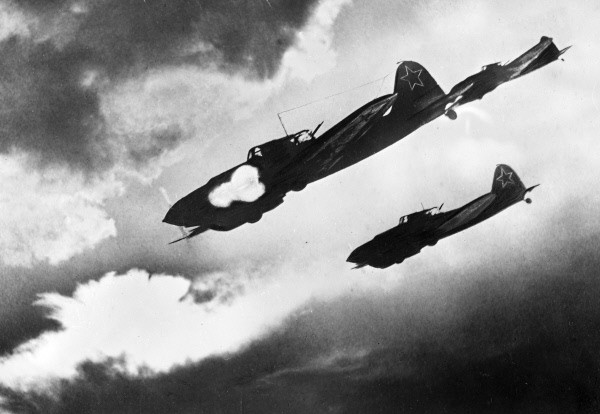France holds a unique place in the collective military psyche. Once the military paragon of Europe, the French seem to have been doomed to an inexorable decline since Napoleon’s defeat at Waterloo.[1] France’s recent expeditionary achievements in Mali are praised, but within the range of small-scale operations. When it comes to major wars, many Americans remember France’s military collapse in 1940 and assume it was inevitable, since the French were stuck in the obsolete tactics of Verdun. This is not some kind of a post-2003 French non-interventionism bashing. Rather in Europe, the most severe critics are often the French themselves.
French Marshal Ferdinand Foch (Wikimedia)
Surprisingly, it is seldom emphasized that the French could quite possibly have imagined something close to the Blitz if they had been not just one but two wars behind in 1939. Indeed, before 1914 they were the strongest advocates of the offensive, which had been taught for years at the Ecole de Guerre by future Marshal Ferdinand Foch, and theorized by the influential Colonel Louis de Grandmaison to the point of the offensive à outrance (attack with no limit). The latter was much criticized later for having inspired the bloody and failed offensives of 1914-1916. But that does not erase the fact that, in the dialectic of the cannonball and the cuirass, the advantage goes successively from one to the other. Hence, the concept of lightning war was really nothing new in 1940, especially to the French. Today, Western armies see the blitzkrieg as the quintessence of military art because it splendidly combined technological innovation with the culture of mission command.
German tactical genius could only delay the overwhelming force of a mass even larger than their own.
Yet, the purpose of the military is not to win battles but wars. And in this respect, it is notable that France’s military defeat of 1940 did not prevent her from standing among the victors of 1945, while Germany, however innovative her forces were, ultimately capitulated. Yes, quantity more than quality crushed the Germans. But that is precisely the point: German tactical genius could only delay the overwhelming force of a mass even larger than their own. Therefore, the Second World War’s lessons are of no interest unless they are put into perspective with this: victory comes from a combination of mass, space, and time in which a military, sanctioned by society and led by politicians, maintains its will to to hold longer than its adversary. This is precisely why superior militaries have lost many a time against non-conventional forces which they viewed as as amateurs, like the English during the Hundred Years War, Napoleon in Spain, and the Soviets in Afghanistan.
Hence, as Europeans rediscover the possibility of a major war due to Russia’s aggressive activity in their neighborhood, and Americans worry about near-peer threats, strategists should look again at what happened in 1940. If we consider—without the comfort of knowing what actually happened—the strategic context of the time, we might come to a more balanced judgment. For it is not fanciful to assume that we might act today exactly like the French did in the 1930s, and for very good reasons.
Innovation and Strategic Coherence in 1940
Maginot Line in France. (Wikimedia)
In the 1920s, Ferdinand Foch’s followers praised maneuver and aggressiveness, while Philippe Petain’s disciples preached firepower and defense. But by this time, they all had integrated innovations from the first World War, although they stressed different lessons and periods. Petain’s vision finally prevailed because it better suited France’s diplomatic posture, which was rooted in the pre-carré policy imagined by Vauban, from which only the Revolution and Napoleon had ever strayed. Without strategic depth and suffering from a demographic imbalance of one to two with Germany, France refused to appear the aggressor for the sake of her international alliances. Instead, France tried to compensate for those limitations with technology and hence built the Maginot Line, a jewel of innovation and the pivot of her defensive plan. France modernized the other components of its military as well. The Navy had been strictly limited by the Treaty of Washington in 1922: the agreement limited France’s tonnage which put her in the fourth position among her peers, behind the United States, the United Kingdom, and Japan, at the same level as Italy who needed maritime reach essentially in the Mediterranean sea, in contrast to France and her colonial Empire. Paris nonetheless managed to develop an efficient navy force to support her worldwide commitment, and disposed in 1939 of three battlecruisers, a dozen heavy cruisers and 78 submarines.[2] In fact, the French Navy performed decently in Narvik and fought fiercely during the evacuation of Dunkirk.
Char B1 bis on display at the Musée des Blindés in Saumur. (Wikimedia)
Hence, French passivity is in many ways a clichéd myth. Military critics have pointed to the linear scattering of heavy assets like the monstrous B1 bis tanks, which lacked the effectiveness of the lighter but more concentrated German tanks. Indeed, compared to the ten mobile Panzer divisions, the four slow-moving Divisions Cuirassées were just too little, too late. But this is where the syllogism slips.
The French were not guilty of incompetence because they privileged linearity and firepower. In the context of the interbellum, it was not absurd: they knew at the operational level the Germans would try to breach the border from several directions. They were therefore in reaction, which does not mean that they were inert, since they intended to channelize the Germans in Flanders—thanks to the Maginot Line—and launch a decisive counterattack. To achieve this, in addition to their four Division Cuirassées, they had three light mechanized divisions equipped with SOMUA tanks, which outclassed German tanks both in mobility and armor penetration. Two of those divisions were grouped together into a cavalry corps. The only armies who ever disposed of such large armoured units during World War II were, besides the French, the Wehrmacht and the Red Army. So contrary to the belief the French missed the train of mechanized warfare, they were in fact closer to J.F.C. Fuller’s ideal than the British themselves.
It is easy to roll the dice once across the Rubicon. Liddell Hart, post factum of course, did not miss the chance to blame the battle of annihilation the French were expecting as being completely outdated by the indirect approach of the blitzkrieg.[3] But the Maginot Line actually proved its efficacy when assaulted. German propaganda, more than German warfare, made it look useless. Additionally, the alpine portion of the line was completely successful, and the Italians were routed when they tried to cross it. Indeed, when the French managed to maneuver in accordance with their doctrine, they did better than match their adversaries. Gembloux on May 15 and 16, 1940, is a prime example of this where the French tactically won the biggest tank battle ever fought until that time, although their victory could not be exploited as the front had been breached at Sedan.[4]
German tanks in Belgium, May 1940. (German Federal Archive/Wikimedia)
When Culture Disrupts Doctrine
In 1940, the French improperly fought their geometrical warfare with a romantic style. Professional militaries, whatever the nation and the time period, are inspired by two traditions: one is romantic and the other is rationalist. They combine them in viewing combat as both art and science. Yet, cultural bias may unbalance this equilibrium. The French used to love style and flamboyance, even when it was tactically absurd: recall Agincourt. Hence, in 1914 many believed in unrestricted offensives. But by the end of 1918, the rule of industrial firepower in military affairs had disqualified the panache of d’Artagnan and led the French to conceptualize geometrical warfare. The French Navy had no concerns with this new paradigm: her environment was already by nature technical. Yet the Army, by its very nature a human force, refused to disappear in the anonymous equation of fire and steel. Not surprisingly, this tension was also expressed in the new airpower literature: while Douhet developed strategic bombing, air aces like Manfred von Richthofen or Eddie Rickenbacker were viewed as the latest form of heroism.
A French postcard from 1914 showing troops attacking “a l’outrance.” (The Drinks Business)
This cultural resistance was not a nostalgic posture: it was also inspired by colonial warfare. In 1939, as in 1870 and 1914 (as well as 2018), the experience of many French officers was forged by overseas wars, not homeland defense. The young cadre were more attracted by the Foreign Legion or the Marines than by the boredom of training conscripts. The challenge of controlling vast territories with a handful of troops enhanced a culture of initiative and risk taking. Although efficient in Africa and the Levant, this philosophy of autonomy contributed to the disruption of the Army in 1940. The bottom-up fascination for audacity, converging with the top-down political drive to back the Belgians immediately, intoxicated the French General Staff. Generalissimo Maurice Gamelin’s eagerness to seize the initiative led him, against his own doctrine and basic principles of war, to commit all his strategic reserves into Belgium. This commitment was further than what the French government’s policy demanded, and far from what was actual German main effort in the Ardennes. Ironically, the Ardennes was not neglected: prior to the Dyle-Breda plan, the reserves were located in Mourmelon, at about a hundred kilometers from Sedan. This fatal miscalculation, as French Marshall Alphonse Juin later stated, was “a faute contre l’esprit” (a fault against the spirit), of the French plans and strategic design.[5]
Significance for Today: What Happened in 1940 Could Happen Again, and Not Only to the French
Mass, time, and space matter. As in the 1930s, new strategic domains nourish the belief that technology will condition resilience. But the fall of France and the survival of Great Britain or the Soviet Union have shown that geography matters as much if not more than capabilities. The Meuse River is not the Channel, and even less the Atlantic or the Pacific Oceans. The Americans, contrary to the French, have a maritime depth, one far greater than that of Great Britain. While both had the ability to prioritize their force development on a cost-effective wait and see approach. They enhanced their thalassocracy while not particularly innovating in land power, even losing the advances they had gained: the British Army did not perform well in 1940. But by 1942, this approach had saved enough time to challenge the Wehrmacht again in Africa.
Facing a different geographical situation, pre-war France stove to compensate for their lack of mass and depth with sophisticated equipment. Today, tightened by budgets and demographic limitations, western armies have entered a similar technological race, with the same assumption that firepower and quality will balance quantity, as if assets like nuclear weapons, cyber or special forces would allow downsizing conventional forces. This remains a gamble.
...in today’s context of hyper-information and social media, political levels are more likely to micromanage their strategic corporals than offer them blank-checks.
Modern avatars of Auftragstaktik may provide adaptability in combat but do not always translate to success in war.[6] Western militaries have concluded from the German example that success relied upon empowered execution rather than centralized control. Not surprisingly, Auftragstaktik is praised among Western officers, for it combines rational and romantic answers to friction, paying tribute to a commander’s intuition and the staff’s science. Moreover, the experience of decades of expeditionary wars has promoted the concept to a leadership philosophy within U.S. Army doctrine. Yet, nothing is more relative: Auftragstaktik led the Germans to success in 1940, but also to defeat on the Marne in 1914 and at Kursk in 1943. Moreover, in today’s context of hyper-information and social media, political levels are more likely to micromanage their strategic corporals than offer them blank-checks. Hence, praising a culture of initiative in tactical organizations might again dig a gap between the way warfare is envisioned and the way it will actually be led.




Therefore, militaries should integrate the political and social dimension of their service. General de Gaulle is credited for placing France, against the odds of 1940, among the winners in 1945. General de Gaulle was a defender of political control of the military, who claimed to be the true French government in 1940, because he was under-secretary of defense not because he was a general. Nonetheless, he never limited his role as an officer as the blind sword of his political masters. He knew that mass, in the long term and when animated by a will, would eventually defeat any military prodigy. France had to regain such a mass, and de Gaulle achieved this by sending the Free French to fight with the Allies, but even more by using officers as synergizing agents of national cohesion, especially to organize the Resistance and avoid a civil war.
Today, threats similar to those of 1940 might reappear. Again, success will not only be a matter of mere military adaptability, but above all the result of a political, popular, and military convergence, especially if reserves or conscripts are to be used as force multipliers.[7] Therefore, officers should develop a political understanding of their profession within society: although very touchy, the question of influencing policy makers by advising, but also by drawing public attention to the issues should be a part of their education. Like Admiral Mahan said: "An Officer should have political courage. Political courage, to be well based, requires political knowledge as well."[8]
Louis-Guilhem Larchet is a French officer. The views expressed in this article are those of the author alone and do not represent those of the French Army, Ministry of the Armed Forces, or the French Government.
Have a response or an idea for your own article? Follow the logo below, and you too can contribute to The Bridge:
Enjoy what you just read? Please help spread the word to new readers by sharing it on social media.
Header Image: Blitzkrieg (Cabulb/Deviant Art)
Notes:
[1] And also, of the United States: look at the uniforms of the Civil War or at the organization of the U.S. military after World War I.
[2] see L’histoire d’une révolution, la Marine depuis 1870, number 4, 2013, p. 56 and 57, by the Centre d'études stratégiques de la Marine (French Navy strategic studies center).
[3] Basil Liddell Hart, History of the Second World War, London, Weidenfeld Nicolson, 1970.
[4] Jeffrey Gunsburg. 'The Battle of Gembloux, 14–15 May 1940: The "Blitzkrieg" Checked'. in The Journal of Military History, Vol. 64, No. 1, January 2000.
[5] Marshall Alphonse Juin. Préface for General Tournoux’s Défense des frontières – Haut Commandement – Gouvernement, quoted by Colonel ROCOLLE La guerre de 1940, tome 1 Page 285, published by Armand Colin in 1990.
[6] German ancestor of mission command, conceptualized by Marschal von Moltke.
[7] Other way said, the dynamics of “Remarkable Trinity” described by Clausewitz (see on War, Howard and Paret edition, Princeton (NJ), 1989).
[8] Mahan attributed this rule to Admiral Horatio Nelson, see A.T. Mahan, Naval Strategy (republished as FMFRP 12-32, HQ Marine Corps, Quantico, VA, 1991), 21.


